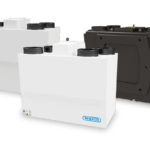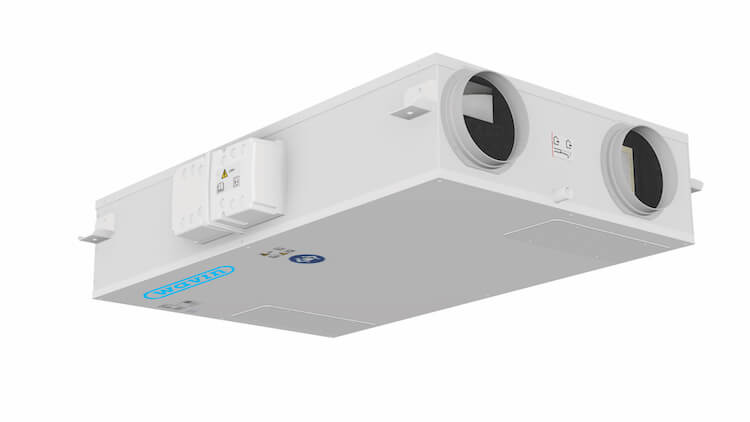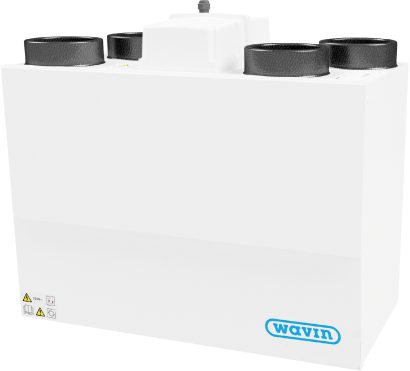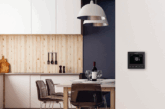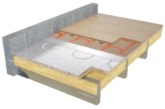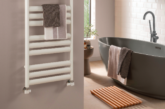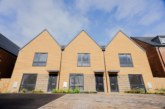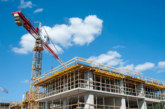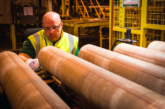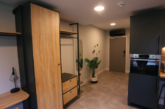Mechanical heat recovery ventilation (MHRV) systems can play a significant role in supporting occupant well-being, meeting sustainable building regulations, and alleviating the pressure on end-users from rising energy bills. Tony Croke, Product Manager at Wavin, explains how this technology can make a difference across the built environment.
What does it take to make a building more ‘sustainable’? As our understanding of the relationship between overall sustainability and improved societal wellbeing develops, the building industry is taking more notice of its responsibility to develop spaces that support the long-term health of occupants.
In this regard, using technology that actively improves indoor air quality (IAQ) is now a must-have for developers looking to create desirable properties that also meet the highest sustainability ratings.
An inside job
Airborne pollutants are alarmingly widespread inside UK buildings, even in high-end apartments and modern spaces. From chemicals in polish and paints, to dust, pollen, damp and mould, ventilation has long been the primary method of extracting these pollutants and boosting IAQ. The UK’s building sector has largely led the way in promoting best practice, with ventilation and other pollution mitigation policies carrying weight in BREEAM, WELL and other sustainability accreditations.
However, recent updates to the UK’s Building Regulations in June this year have shown the increasing importance of supporting better IAQ. With the refreshed regulations acting as a stick to go with the carrot offered by industry certification.
Approved Document F, the section of the legislation dedicated to ventilation, has recently been updated to require a much higher minimum whole dwelling ventilation rate, among other changes.
Increased ventilation will be welcomed by many during the summer months. However, as temperatures begin to drop, systems which bring in cold air from outside can put added pressure on heating systems – leading to much higher energy bills that users will struggle to afford following the ongoing rises in energy prices.
Heat recovery helps
Because traditional ventilation systems introduce air to an indoor environment at external temperatures, occupants will often choose the comfort that comes with retaining warmth over the health benefits of venting and recycling the air. This is unfortunately the dynamic that appears with issues of IAQ on a broader scale – the health effects are long-term, and so will often be discarded in favour of more pressing questions of comfort and convenience.
MHRV, however, can deliver a consistent supply of warm, fresh air that supports the existing heating system, as opposed to demanding more from it.
By specifying more innovative mechanical ventilation with in-built heat recovery technology, developers can save future occupants from having to sacrifice warmth for fresh air. These cutting-edge systems, such as Wavin’s Ventiza range, warm inbound air by passing it over a heat exchanger, meaning it can be delivered at nearly 90% of the internal air temperature. The air is also filtered for dust and pollen, meaning there is minimal ingress of pollutants from outside.
These solutions are particularly effective in combination with more innovative heating methods such as underfloor heating and heat pumps. MHRV systems can support these systems by helping to achieve a consistent temperature throughout spaces of all sizes and throughout the day. This avoids fluctuations that put pressure on individual systems and drives bills upwards. Ventilation solutions that can keep energy bills low while protecting air quality can be powerful motivators for end-users and landlords, as they offer a tangible return on any short-term investment.
Flexible and responsive
More innovative MHRV ranges are also suitable for a variety different properties. For example, the Ventiza range holds several different products which are designed to suit small apartments to large houses. This means developers can take a tailored approach to sustainable wellbeing for different projects. Many products, including those from Wavin, are certified by industry recognised sustainability assessors such as BRE.
The interconnectivity between MHRV systems and smart controls also put more power in the hands of end-users, with modern controllers featuring intuitive interfaces able to better guide occupants on creating the perfect climate using the most efficient amount of energy.
A perfect storm
The challenge to build green is one that, when combined with ongoing economic uncertainty, has the potential to form a perfect storm for developers and end-users. However, improving indoor air quality and lessening the impact of energy bills are both areas where developers can make a tangible impact by choosing more innovative products.
Ventilation is now central to the sustainability of a residential project as shown by the recent updates to regulations. MHRV systems offer developers a way to make their mark with indoor-climate-focused solutions.

